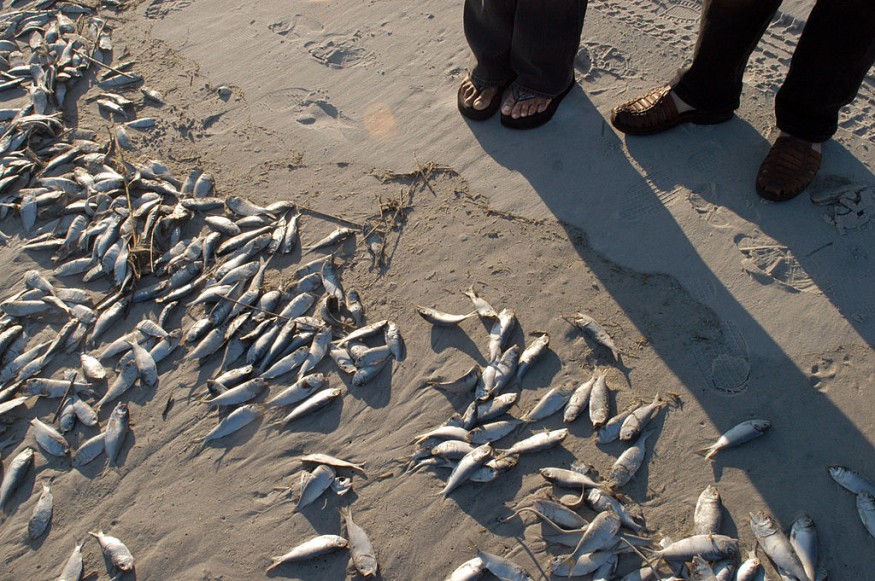
As a result of climate change stimulating a toxic algal bloom in the region on Thursday, Thailand's coastline is lined with thousands of dead fish.
Toxic Algal Bloom in Thailand
A plankton bloom that resulted in millions of dead fish washing up over a nearly 2.5-mile length of beach in Thailand's southern Chumphon province on Thursday may have been triggered by climate change, according to one expert.
The fish deaths were ascribed to the bloom, a natural event that decreases oxygen levels in the water and kills fish by suffocating them, said Thon Thamrongnawasawat, the Kasetsart University deputy dean of the Faculty of Fisheries.
According to Thamrongnawasawat, certain natural events, like coral bleaching or plankton bloom, have happened on their own for tens of thousands to hundreds of thousands of years.
Global warming, on the other hand, amplifies and makes existing events more frequent.
Plankton blooms endure two to three days on average and occur once or twice a year, according to the local authorities.
Seawater has been collected by officials for additional evaluation and analysis.
Algal Bloom in the US
This year, concerns about maritime heatwaves have spread around the globe.
According to the British Met Office, the onset of the natural climate phenomenon El Niño, which has a warming effect on the entire planet, as well as human-caused climate change, which results in higher temperatures for oceans and land, are both contributing factors to the global ocean surface temperatures for April and May being the highest on record for those months.
This month, many dead fish ended up on Texas beaches, and owing to increased ocean temperatures.
Scientists are forecasting algal outbreaks throughout the British coast.
A poisonous algal bloom in Southern California has caused hundreds of dolphins and sea lions to show up on beaches dead or sick.
Although significant coastal upwelling rather than high temperatures were more of a contributor to California's algal blooms, experts believe that climate change would likely increase harmful algal blooms as some thrive in warm water.
Sarah Perkins-Kirkpatrick, a climate scientist at the University of New South Wales in Australia, cautions that the impact of this phenomenon on local ecosystems will be grave.
Whether it pertains to Australia, including renowned sites like the Great Barrier Reef or regions near England currently grappling with intense marine heatwaves, the detrimental effects on these ecosystems cannot be overstated, CNN reported.
Climate Change and Toxic Algal Blooms
According to the Centers for Disease Control and Prevention CDC, in fresh, salt, and brackish water, toxic algae and cyanobacteria can develop more quickly due to climate change.
It can increase the frequency and severity of blooms.
For instance, the cyanobacterium Microcystis aeruginosa has seen large-scale blooms in Lake Erie that persist throughout the first few months of winter as a result of higher lake temperatures. Such blooms have increased in frequency and distribution across the country during the last few years.
According to the United States Environmental Protection Agency, a warming water temperature, changes in salinity, increased carbon dioxide levels, variations in sea level rise, rainfall, and coastal upwelling are some of the climatic factors that might have an impact on algal blooms.
Related Article : Fish Kill in Louisiana Due to Lack of Oxygen, Experts Say Possible Uptick as Oceans Warm
© 2025 NatureWorldNews.com All rights reserved. Do not reproduce without permission.





